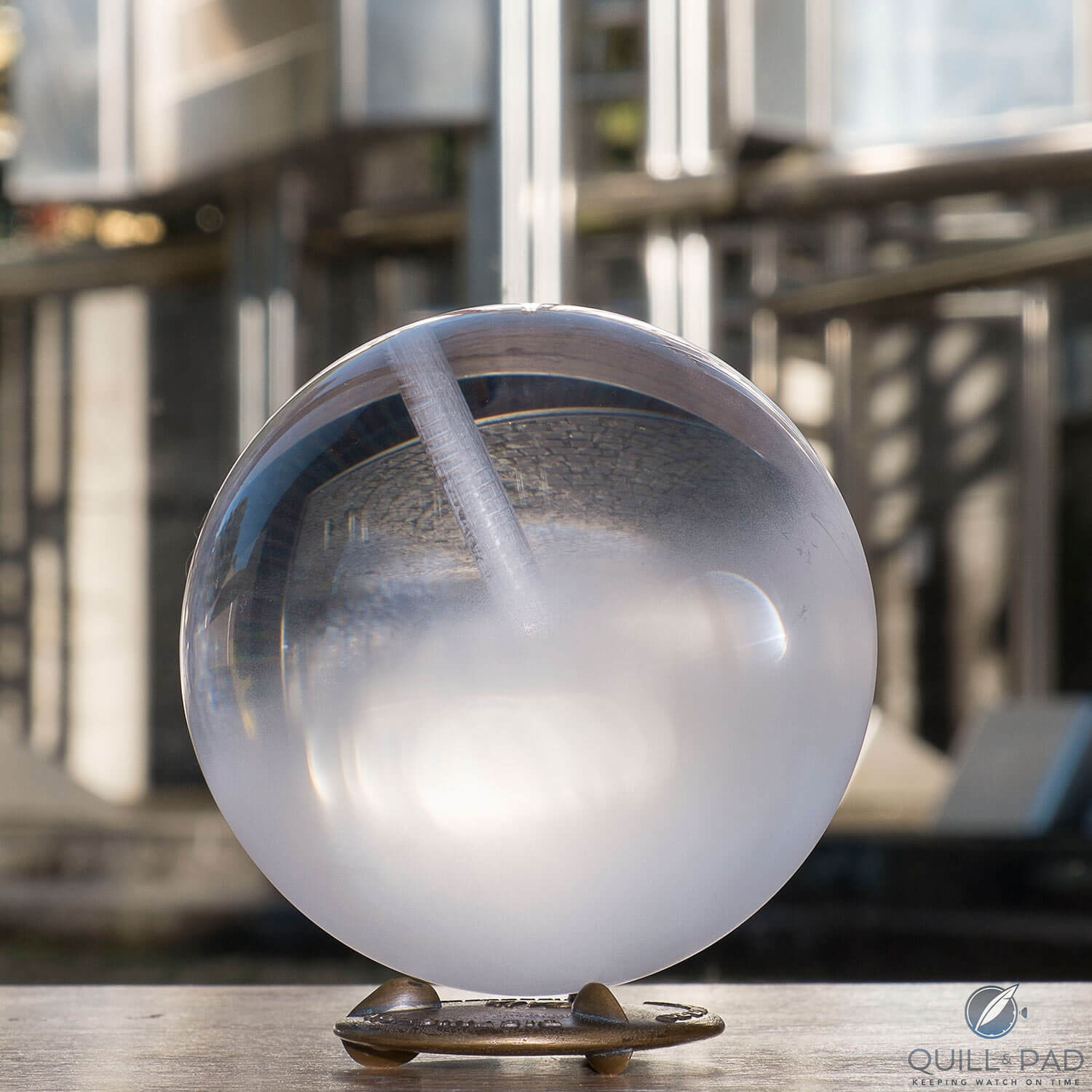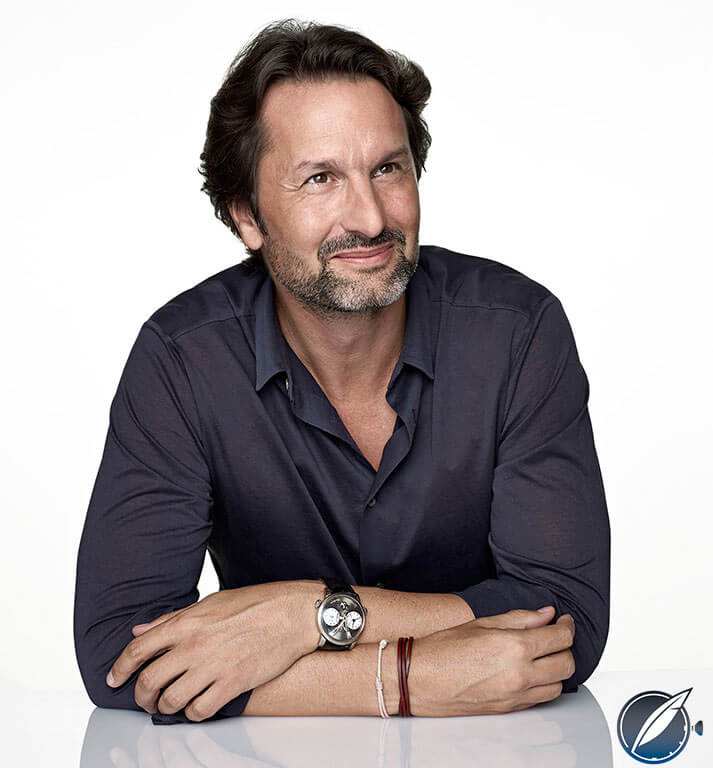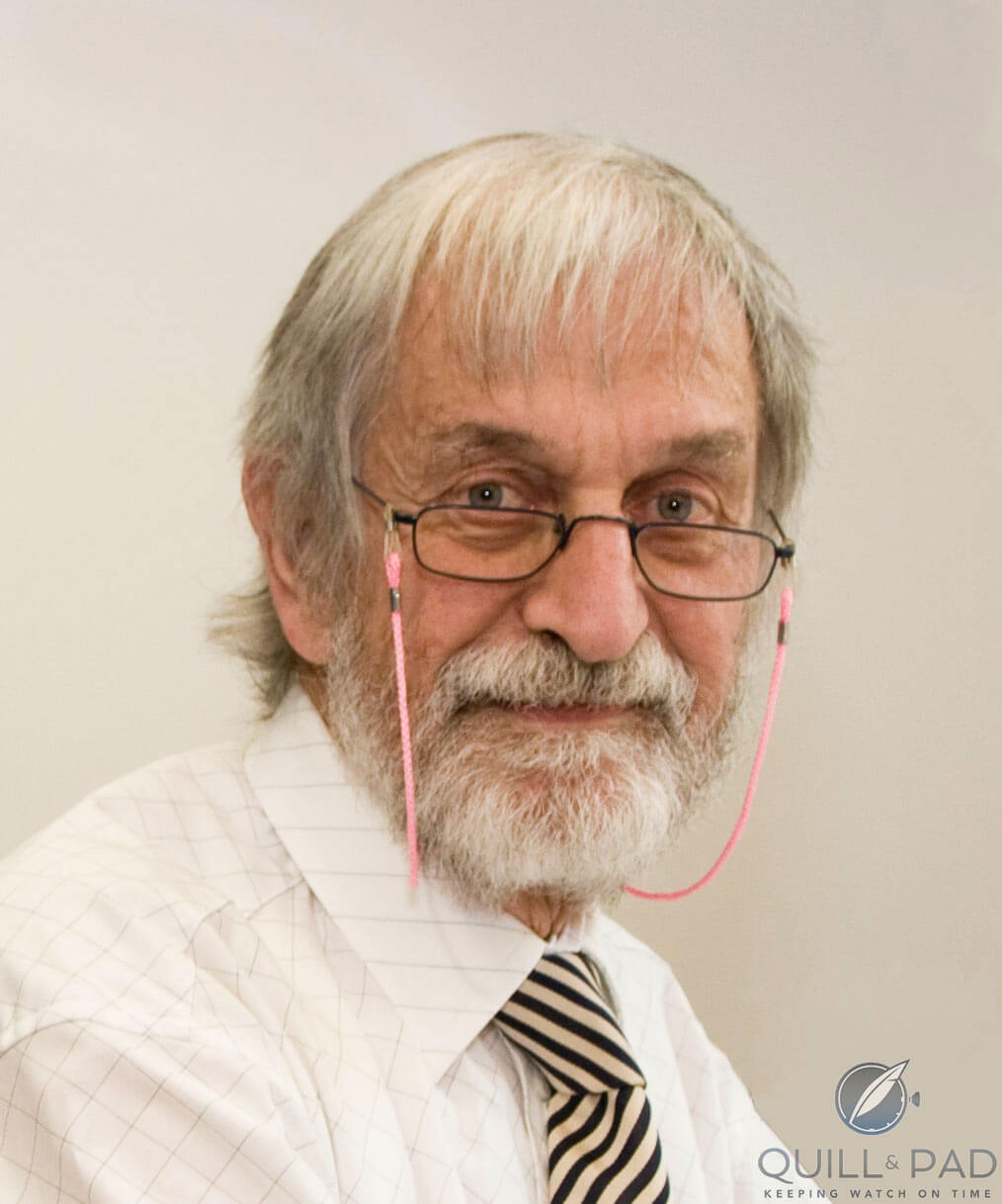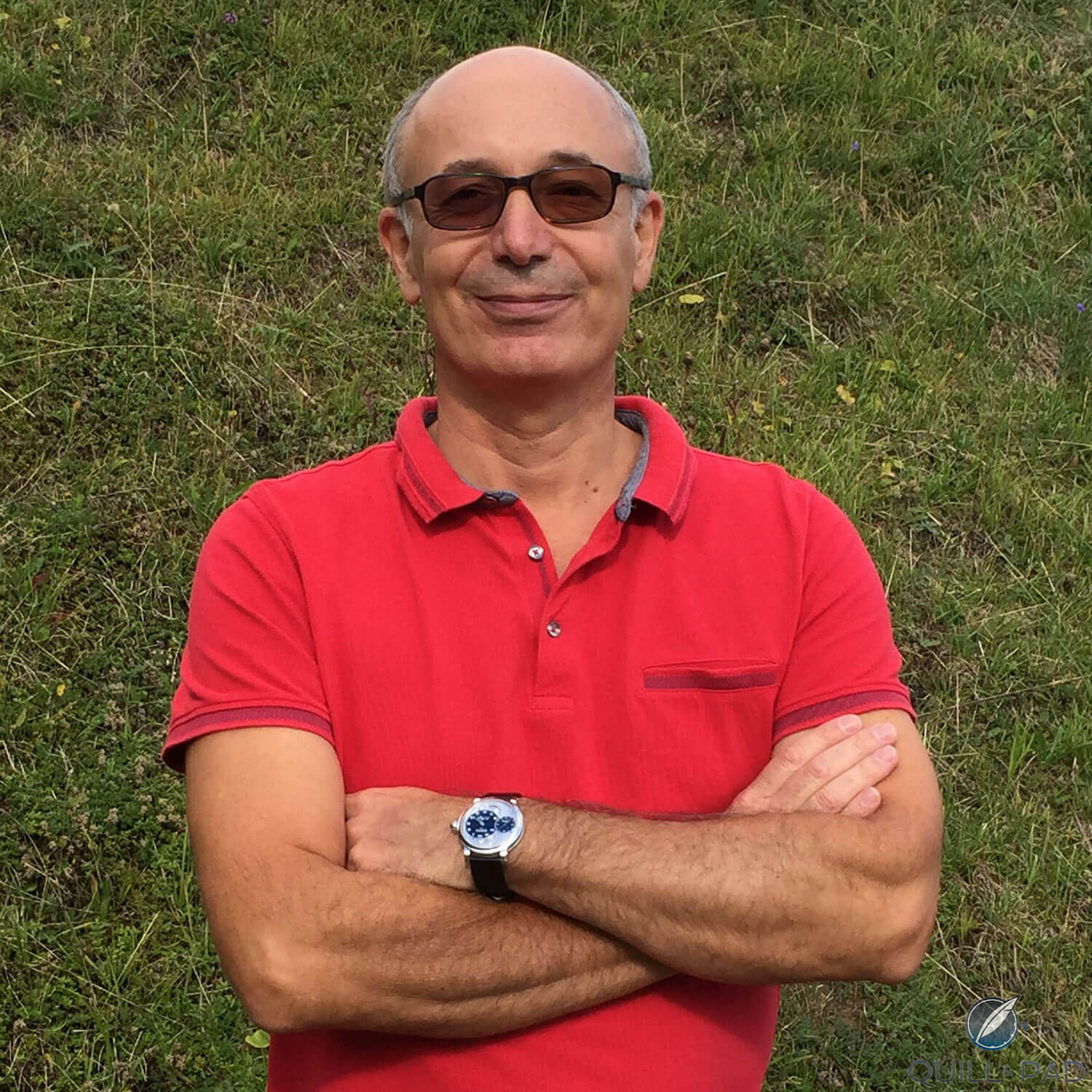In 1993, the Musée International d’Horlogerie in La Chaux-de-Fonds (MIH) created the Gaïa Award to honor the memory of one of the earliest patrons of the museum, Maurice Ditisheim. If the Grand Prix d’Horlogerie de Genève awards the horological Oscars, then the more cerebral Gaïa might be considered our horological Nobel Prize.
Now celebrating its twenty-fifth year, the 2018 Gaïa Award adds something new in the form of an incentive grant called the Horizon Gaïa, which aims to encourage new talent in the fields of craftsmanship/creation, history/research, and entrepreneurship.
The grant will fund an individual project to be completed within one year, with the first recipient to be announced during the 2019 Gaïa Award ceremony in La Chaux-de-Fonds.

Prix Gaïa trophy
The winners of the 2018 Gaïa Award are as follows.
Entrepreneurship: Maximilian Büsser
The jury of the 2018 Prix Gaïa awarded Büsser “in recognition of his creative approach to watchmaking in the design and marketing of his products and for the innovative way he manages his business.”
Max Büsser, 51, is the founder of MB&F. After earning a degree in microtechnology from the EPFL (Swiss Federal Institute of Technology) in Lausanne, he became passionate about watches while working as a product, sales, and marketing manager at Jaeger-LeCoultre under the infamous Günter Blümlein – the man who saved Jaeger-LeCoultre during the so-called quartz crisis and who would later aid Walter Lange in heralding the renaissance of A. Lange & Söhne after the fall of the Berlin Wall.

Maximilian Busser, winner of the 2018 Prix Gaïa for Entrepreneurship
At 31 Büsser was headhunted away from Jaeger-LeCoultre and appointed managing director of Harry Winston Rare Timepieces, where he created the Opus collection with an all-star lineup of independent watchmakers (see The Harry Winston Opus Series: A Complete Overview From Opus 1 Through Opus 13). The company’s turnover increased 900 percent during Büsser’s seven years there.
Büsser left Harry Winston in 2005 to create his own brand, MB&F: Max Büsser and Friends. This Geneva-based boutique brand, which has also opened three M.A.D.Galleries (art galleries specializing in mechanical art), is dedicated to developing radical concepts in watchmaking in collaboration with people that Büsser likes working with. The first Horological Machine, HM1, appeared in 2007 – co-created with Eric Giroud, (Naked Watchmaker) Peter Speake-Marin, and Laurent Besse.
MB&F has won four awards at the Grand Prix d’Horlogerie de Genève as well as a Red Dot design award (see The 2015 Red Dot Has A New Watch Category. And The Winners Are . . .).
In winning the 2018 Prix Gaïa for Entrepreneurship, Büsser joins a list of visionary laureates that read like a who’s who of Swiss watchmaking: Richard Mille, Günter Blümlein, Luigi Macaluso, Rolf Schnyder, Nicolas G. Hayek, Robert Greubel and Stephen Forsey, Jean-Claude Biver, Philippe Stern, Franco Cologni, Ernst Thomke, and Giulio Papi are just a few of these illustrious names.
History and Research: Reinhard Meis
The jury of the 2018 Prix Gaïa awarded Meis “in recognition of his key contribution to our understanding of the technical history of watchmaking thanks to his exhaustive independent research and for the excellence of his publications in the field of complicated watches.”
Trained as a watchmaker in Hamburg, this German national specialized in precision mechanics before working with Siemens and Telefunken in the late 1960s and early 1970s.

Reinhard Meis, winner of the 2018 Prix Gaïa for History and Research
While working as a technical assistant to the professors in the faculty of physics at the University of Konstanz from 1973 to 1991, Meis wrote the now-standard reference works Die Alte Uhr (1978, Klinkhardt & Biermann), Taschenuhren (1979, Callwey), Das Tourbillon (1986, Laterna Magica), and Chronographen, Armbanduhren – the latter co-written with Chronoswiss founder and chronograph expert Gerd-Rüdiger Lang and published by Callwey in 1992 – in addition to many articles for periodicals and journals.
As A. Lange & Söhne reappeared in the early 1990s in Glashütte, Meis became a technical adviser and movement designer – contributing significantly to the collection of A. Lange & Söhne’s four debut wristwatches. During his time at A. Lange & Söhne, Meis published A. Lange & Söhne: eine Uhrmacherdynastie aus Dresden and A. Lange & Söhne, feine Uhren aus Sachsen, standard reference works on this multifaceted Saxon manufacturer.
In 2004 he went to Richemont’s Movement Center in Neuchâtel as the engineering director for product design and a consultant for the group’s brands. Meis retired in 2011.
Meis joins past winners Roger Smith, Jonathan Betts, Henry Louis Belmont, François Mercier, Ludwig Oechslin, Jean-Luc Mayaud, Jean-Claude Sabrier, Yves Droz, Joseph Flores, Estelle Fallet, Kathleen Pritschard, Catherine Cardinal, John H. Leopold, Pierre-Yves Donzé, Francesco Garufo, Günther Oestmann, Laurence Marti, and Pierre Thomann as a laureate in this category.
Craftsmanship/Creation: Paul Clementi
The jury of the 2018 Prix Gaïa awarded Clementi “in recognition of his extensive skills in craftsmanship and for using his historical knowledge to produce inventive creations with the highest standards of professional conduct.”
A graduate of the Besançon school of watchmaking, Clementi began his career working as a prototypist at L’Epée, creating table clocks and other such objects before joining Michel Parmigiani’s team in 1989, where he restored a Breguet Sympathique clock.

Paul Clementi, winner of the 2018 Prix Gaïa for Craftsmanship/Creation
During his long career, he has trained apprentices at the Technical College in La Chaux-de-Fonds and taught at the HE-ARC. But he has also contributed behind the scenes to some of the watch world’s great feats such as a De Bethune mystery clock, a mystery tourbillon for Daniel Roth, and adding the miniscule silicon-outfitted tourbillon to the Corum Golden Bridge in 2010.
Clementi is now the technical director at Bovet.
In winning the 2018 Prix Gaïa for Creation, Clementi joins winners that can be described as no less than technical and artistic virtuosos, including the likes of Jean-Marc Wiederrecht, François-Paul Journe, Michel Parmigiani, Derek Pratt (who co-created many Urban Jürgensen recent-history works), George Daniels, Beat Haldimann, Swatch’s Jacques Müller and Elmar Mock, Corum’s René Bannwart, automaton maker François Junod, Eric Coudray of Cabestan and Jaeger-LeCoultre, and A.H.C. I. members Vincent Calabrese, Philippe Dufour, Paul Gerber, Andreas Strehler, Vianney Halter, and Kari Voutilainen in this category. Anita Porchet has been the only female recipient thus far (see The 2015 Gaïa Awards: Giulio Papi, Anita Porchet, And Jonathan Betts Honored).
For more information on the Prix Gaïa, please visit www.chaux-de-fonds.ch/musees/mih/prix-gaia.
You may also enjoy:
The 2017 Gaïa Awards: Richard Mille, Jean-Marc Wiederrecht, And Laurence Marti Honored
The 2015 Gaïa Awards: Giulio Papi, Anita Porchet, And Jonathan Betts Honored
Kari Voutilainen Wins The 2014 Gaïa Award for Artisanal Creation
Leave a Reply
Want to join the discussion?Feel free to contribute!





















































Great Article! Mr. Busser and others (notable characters) are some of the best in the Field. Pioneership and Apprenticeship is greatly apppreciated in horology….